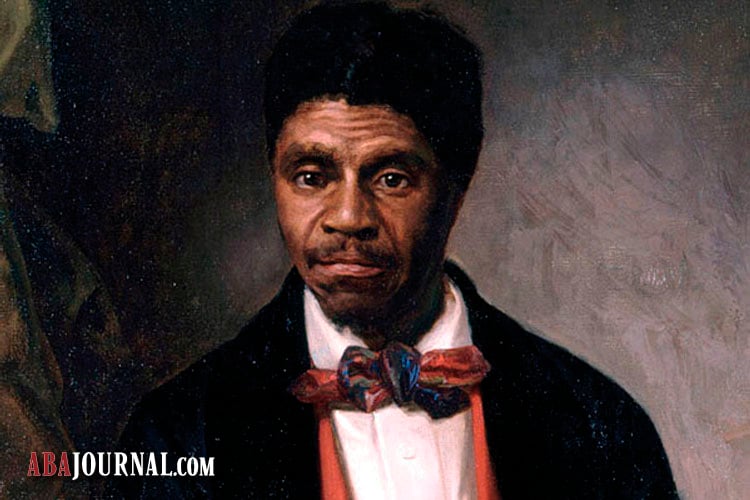The 14th: A Civil War-era amendment has become a mini Constitution for modern times
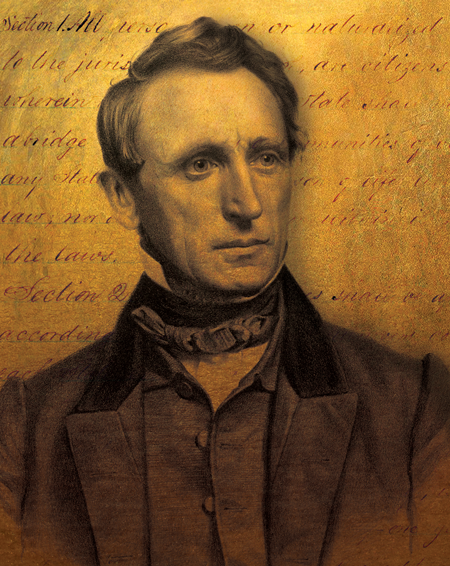
John Bingham. Photo Illustration by Brenan Sharp.
John A. Bingham wasn’t the most prominent Republican politician during the Civil War period; he probably wasn’t even among the top 10.
Elected to the U.S. House of Representatives in 1854, he was forced into premature retirement eight years later after losing re-election. There were plenty of external factors for his loss: His Ohio district had been redrawn, and Bingham had been forced to run in unfamiliar territory; also, it was the first full year of the Civil War, and the Union soldiers who lived in his new district (most of whom were Republican-leaning) were off fighting the Confederates.
Yet Bingham managed to cultivate a pretty warm friendship with the guy who was the most prominent Republican at the time: President Abraham Lincoln. Lincoln kept Bingham employed with various jobs following the latter’s electoral defeat. One of them was as a military prosecutor—a job that allowed Bingham to prosecute John Wilkes Booth’s co-conspirators in Lincoln’s assassination.
And one more role Bingham garnered provides his most lasting legacy: He is the father of the 14th Amendment. As a leading member of the Joint Committee on Reconstruction, Bingham was the main author of the amendment, adopted by Congress on June 13, 1866, and ratified on July 9, 1868.
The longest amendment in the U.S. Constitution, the 14th is also the most complex, resulting in a raft of litigation over its meaning and reach that continues to this day.
It is also arguably the most important amendment in this nation’s history. It enshrined the notion of equality under the law, protected the rights of the newly freed slaves and guaranteed due process to all people.
The 14th Amendment, as well as the other Reconstruction amendments, sets the stage for what some scholars refer to as the country’s “second founding.” It brought to life Lincoln’s promise for a “new birth of freedom” made on the battlefield at Gettysburg, and it re-affirmed the lofty ideals of the Declaration of Independence.
See our gallery of 14th Amendment milestones.
“We rightly revere Washington, Jefferson, Adams and Hamilton—all of the original Founding Fathers,” says Tom Donnelly, senior fellow for constitutional studies at the National Constitution Center. “The 14th Amendment, more than any other provision, suggests how unfinished their work was. For many years, we underplayed the accomplishments of the people who saw Lincoln’s work through. People like Thaddeus Stevens, Charles Sumner and, of course, John Bingham.”
‘A GREAT QUESTION’
As Gerard Magliocca, a professor of law at Indiana University, recounted in his 2013 book, American Founding Son: John Bingham and the Invention of the Fourteenth Amendment, shortly after his 1862 electoral defeat, Bingham wrote to U.S. Treasury Secretary and fellow Ohio Republican Salmon P. Chase. He stated that the “limitations of the Constitution upon the states in favor of the personal liberty of all of the citizens of [the] republic black and white [are] soon to become a great question before the people.”
Radical Republicans were able to secure passage of the 1866 Civil Rights Act over Andrew Johnson’s veto, but their feud with the president—whom they would eventually try to remove from office—caused them to look at more permanent ways of enacting their agenda.
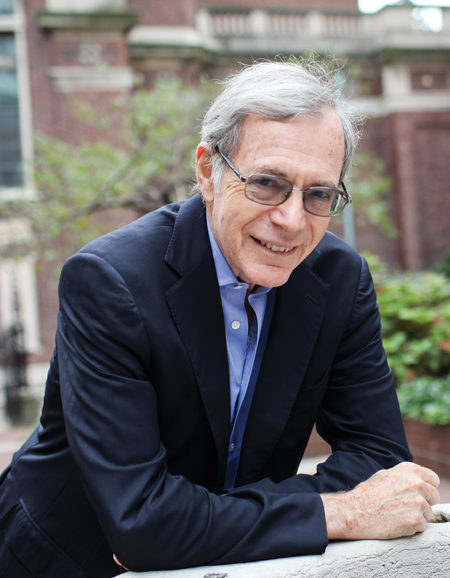
“The 14th Amendment was the GOP’s opportunity to put the results of the Civil War into the Constitution so they could not be easily changed by subsequent congresses.” — Eric Foner
Daniella Zalcman/Columbia University.
“The 14th Amendment was the GOP’s opportunity to put the results of the Civil War into the Constitution so they could not be easily changed by subsequent congresses,” says Eric Foner, a professor of history at Columbia University.
Foner argues there were a number of different concerns among congressional Republicans, including some arcane issues that have been lost to history—such as whether former Confederates could hold office. However, Foner maintains the framers were clearly concerned about potential state infringement of the rights of all people, particularly the newly freed slaves.
“It’s so obvious that we forget about it, but the people who wrote it and voted for it expected it to be abided by,” says Foner. “They expected all of the states to follow it.”
Bingham emerged as the main force behind the drafting process for what would become the 14th Amendment. He essentially wrote most of Section 1, which holds: “All persons born or naturalized in the United States, and subject to the jurisdiction thereof, are citizens of the United States and of the state wherein they reside. No state shall make or enforce any law which shall abridge the privileges or immunities of citizens of the United States; nor shall any state deprive any person of life, liberty or property, without due process of law; nor deny to any person within its jurisdiction the equal protection of the laws.”
According to Magliocca, Bingham had previously submitted drafts that included an explicit anti-discrimination clause and was clear in his belief that the 14th Amendment applied the Bill of Rights to the states. As Magliocca argued in his book, one man’s views do not control how the 14th Amendment should be interpreted. Nevertheless, his ideas would become highly influential and would set the stage for a drastic expansion of individual rights.
But not at first.
WHO RULES?
For one thing, the framers of the amendment left open-ended the matter of enforcement. “They didn’t really think it through,” says Foner. “That’s why the fifth section is so vague. They didn’t expect massive resistance to it. They never came up with a way to do it, and the Supreme Court didn’t help.”
Michael Les Benedict, an emeritus professor of history at Ohio State University, argues that the main responsibility for enforcement shifted to the courts—a revolutionary concept at the time.
“Before the Civil War, no one thought of the federal courts as having the main responsibility for protecting individual rights,” says Benedict, who points out that state courts didn’t really perform this role, either.
“The Supreme Court simply did not see its main job to be the protection of individual rights, and there were no civil rights organizations to ask it to,” says Benedict. “When the court did finally do something to protect rights, it was an effort to protect the rights of slave owners to take slaves into the territories in the Dred Scott decision. And that caused an absolute uproar.”
Benedict says that Bingham worded the amendment in a way that gave the federal courts a role in enforcing the 14th Amendment alongside Congress, specifically as insurance if Congress flipped to the Democrats in the future. “If Bingham had not done that, the courts would have had no power to enforce the 14th Amendment,” says Benedict. “Instead, the 14th Amendment virtually imposed the responsibility on the courts to enforce the rights protected by the 14th Amendment. But they did not really want to do so—it was a new obligation they were not used to.”
In the decades immediately following the amendment’s adoption, the Supreme Court seemed to retreat from its enforcement responsibilities. Starting with the Slaughter-House Cases in 1873, the court found that the 14th Amendment only protected rights relating to U.S. citizenship and did not restrict states from utilizing their plenary powers. Justice Samuel Miller found that the first sentence of Section 1 distinguished between citizenship of the United States and citizenship of a state, and that the 14th Amendment only covered the privileges or immunities listed in the Constitution. In his dissent, Justice Stephen J. Field criticized the majority for turning the 14th Amendment into a “vain and idle enactment,” arguing that the amendment protected certain fundamental rights from state intrusion.
Michael Curtis, a professor at Wake Forest University School of Law, finds the court’s interpretation to be puzzling. “The federal privileges and immunities that the court found to be covered by the 14th Amendment were things like protection on high seas and in foreign lands,” says Curtis. “The major reason for having the 14th Amendment is to protect the newly freed slaves, but how many of them are actually going to be out on the high seas or in foreign lands?”
Several years later, the court took a narrow view of incorporation, ruling in United States v. Cruikshank that the 14th Amendment did not apply the Bill of Rights to the states. The Civil Rights Cases of 1883 declared the 1875 Civil Rights Act unconstitutional and limited enforcement of anti-discrimination statutes to states or state actors, exempting private individuals and businesses.
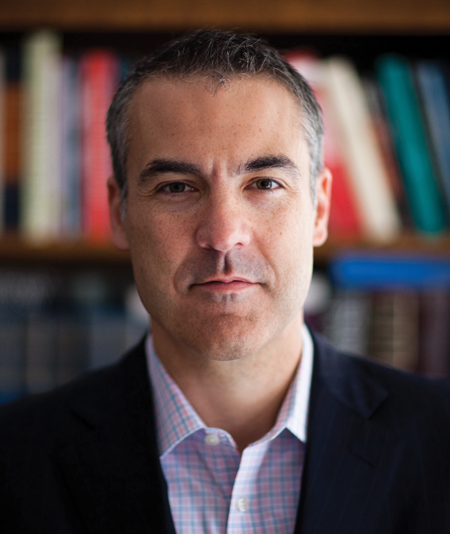
“Equal protection and due process don’t necessarily guarantee an upward march toward ever greater freedom. ... We know they can make the world better, and they can make the world worse because they have done both.” — John Fabian Witt
Photograph courtesy of the Yale Law School.
In his dissent, Justice John Marshall Harlan predicted that decision would lead to widespread discrimination against African-Americans and other racial minorities—a prediction that bore fruit as Jim Crow laws became dominant in the South.
OTHER PATHS
Lisa Crooms-Robinson, a professor at Howard University School of Law, argues that, even if you limit the 14th Amendment to the sole purpose of protecting newly freed slaves, there had to be a broad range of rights they had to be entitled to. “The 14th Amendment didn’t necessarily have gender equality in mind, but both men and women were slaves,” says Crooms-Robinson. “As such, the newly freed women slaves would be entitled to certain rights that may not have been contemplated by the framers, such as the right to bodily integrity.”
But the court chose that narrow path. “I wouldn’t say the court was wrong, but there are other, perfectly plausible interpretations of the 14th Amendment that the court could have opted for,” says Foner. “The court could have held that the 14th Amendment was meant to guarantee basic rights and empower the federal government to make sure people would be able to exercise these basic rights. Instead, over and over again, the court opted for a narrow view of the 14th.”
Curtis, meanwhile, believes the court would have been well within its bounds to interpret the 14th Amendment as giving Congress the power to protect the fundamental rights of citizens against political terrorists like the Ku Klux Klan that were acting as private organizations. “The most disappointing aspect is that these cases could have been decided the same way without reading the Bill of Rights out of the 14th Amendment,” Curtis says.
That’s not to say that all 14th Amendment cases during the first couple of decades went in favor of the states. When Chief Justice Morrison Waite gaveled to order the case of Santa Clara County v. Southern Pacific Railroad Co. in 1886, he started with an aside that would have major repercussions for the country over the next several decades and beyond. The case, actually several cases consolidated into one, saw railroad companies challenge a California tax under the theory that they were people under the definition of the 14th Amendment and entitled to equal protection under the law.
The point had been briefed by both parties and promised to be a major point of contention during the oral argument, until Waite waved both lawyers off before the argument even started. “The court does not wish to hear argument on the question whether the provision in the 14th Amendment to the Constitution, which forbids a state to deny to any person within its jurisdiction the equal protection of the laws, applies to these corporations,” Waite said. “We are all of the opinion that it does.”
As a result, over the next several decades, the court would consistently rule against state and federal laws aimed at regulating businesses, including minimum wage and child labor laws.
The Lochner era (named after the 1905 case of Lochner v. New York, which struck down a state maximum work hours law), has been criticized by numerous legal scholars, both liberal and conservative, and fell into disfavor during the New Deal era.
“I think those cases are viewed as a low moment in the court’s history,” says Deborah Rhode, a professor at Stanford Law School. “It wasn’t a very diverse group of justices and did not include any justices who had much personal experience or empathy with the concept of discrimination. But they did have lots of empathy for business interests.”
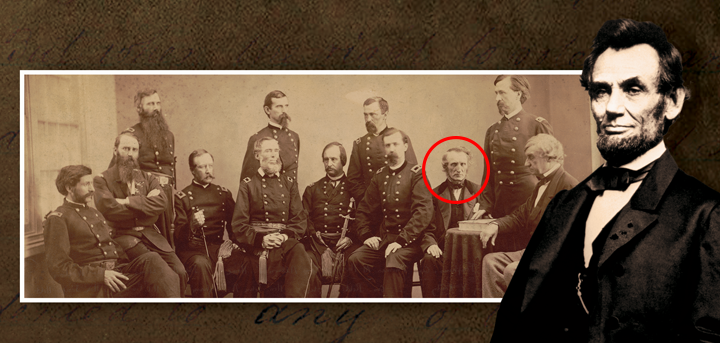
President Abraham Lincoln inadvertently ensured his assassination co-conspirators would be brought to justice when he appointed Rep. John Bingham (circled) as a military prosecutor.
RIGHTS MUSIC
What the early years of the 14th Amendment proved is that it had an accordion quality—expanding or contracting based on the people interpreting it.
“The 14th Amendment can move us forward and also backward,” says John Fabian Witt, a professor at Yale Law School. “Equal protection and due process don’t necessarily guarantee an upward march toward ever greater freedom. ... We know they can make the world better, and they can make the world worse because they have done both.”
The accordion would start to expand over the next 60 years.
In 1938, a commerce power case demonstrated the importance of footnotes. In United States v. Carolene Products Co., Justice Harlan Fiske Stone’s majority opinion almost single-handedly changed the way courts would apply the equal protection clause. In his famed Footnote 4, Stone established the legal principle that laws targeting minorities and other historically disadvantaged groups would have to clear a higher burden in order to be deemed constitutional.
“It is unnecessary to consider now whether legislation which restricts those political processes which can ordinarily be expected to bring about repeal of undesirable legislation is to be subjected to more exacting judicial scrutiny under the general prohibitions of the 14th Amendment than are most other types of legislation,” Stone wrote. “Nor need we inquire whether similar considerations enter into the review of statutes directed at particular religious ... or national ... or racial minorities, ... whether prejudice against discrete and insular minorities may be a special condition, which tends seriously to curtail the operation of those political processes ordinarily to be relied upon to protect minorities, and which may call for a correspondingly more searching judicial inquiry.”
Stone’s footnote would become the foundation for the three-tiered approach to judicial scrutiny that continues to exist today: rational basis, heightened scrutiny and strict scrutiny.
And it was a dissent that helped resurrect Bingham’s intentions to apply the Bill of Rights to the states via the 14th Amendment. In the years since Cruikshank and the Civil Rights Cases, the court had applied certain “fundamental rights” within the Bill of Rights to the states. They include the freedom of speech, press and assembly components of the First Amendment and the Fifth Amendment provision prohibiting the taking of private property without compensation. In the 1940s, Justice Hugo Black started sounding the horn for total incorporation of the Bill of Rights (other than the Ninth and 10th amendments, which don’t list individual rights) to the states. Arguing that all of the rights guaranteed in the first eight amendments were fundamental, Black maintained that they should all be automatically protected against state interference.

Considering Brown v. Board: Most people “view it as being on the right side of history and ... an important moment for the Supreme Court to step in with unanimity and forge a path toward greater racial equality.” — Deborah Rhode
Photograph courtesy of Stanford University.
In 1947, Black came up on the losing end in Adamson v. California, which re-affirmed the decisions of those post-14th Amendment courts in holding that the Fifth Amendment right against self-incrimination did not apply to the states. In his lengthy dissent, Black took the opportunity to resurrect Bingham’s ideals. Calling Bingham “the Madison of the first section of the 14th Amendment,” Black criticized the majority for refusing “to appraise the relevant historical evidence of the intended scope of the first section of the [14th] Amendment” and, instead, relying on “previous cases, none of which had analyzed the evidence showing that one purpose of those who framed, advocated and adopted the amendment had been to make the Bill of Rights applicable to the states.”
As more like-minded justices joined the Supreme Court throughout the 1950s and 1960s, Black’s views on incorporation became the basis for a series of opinions that explicitly applied most of the Bill of Rights to the states. Black took a victory lap, of sorts, in the seminal case of Gideon v. Wainwright, writing for a unanimous court that the Sixth Amendment right to counsel applied to the states. “The right of one charged with crime to counsel may not be deemed fundamental and essential to fair trials in some countries, but it is in ours,” Black wrote.
Black may have won the war for incorporation, but he became horrified when his court brethren started using the 14th Amendment to expand the notion of fundamental rights beyond those listed in the original Bill of Rights.
FREEDOMS AND INTERFERENCE
The doctrine of substantive due process became dominant on the court as justices found that the 14th Amendment’s due process clause contained a substantive component, as well as the more widely accepted procedural component. These justices held that there were certain fundamental freedoms that were protected from state interference, even ones that weren’t spelled out explicitly in the Constitution.
In Griswold v. Connecticut (1965), the court held that an anti-contraception statute violated the right to marital privacy. The majority was divided over the constitutional basis for a right to such privacy, with Justice William O. Douglas arguing the right was implied through several “penumbras” in the Bill of Rights, including the right against self-incrimination and the right to free association. Other justices cited the due process clause of the 14th Amendment, and Justice Arthur Goldberg would cite both the 14th and Ninth amendments in an influential concurrence.
In dissent, Black excoriated the majority for acting like a legislature: “No provision of the Constitution specifically gives such blanket power to courts to exercise such a supervisory veto over the wisdom and value of legislative policies and to hold unconstitutional those laws which they believe unwise or dangerous.”
Several years after Griswold, the court expanded on that reasoning in Roe v. Wade (1973). “This right of privacy, whether it be founded in the 14th Amendment’s concept of personal liberty and restrictions upon state action, as we feel it is, ... is broad enough to encompass a woman’s decision whether or not to terminate her pregnancy,” Justice Harry Blackmun wrote in his majority opinion.
Some would argue that the use of substantive due process has been a bridge too far. To textualists like Justices Antonin Scalia or Clarence Thomas, substantive due process simply isn’t supported by the text of the 14th Amendment as it was understood at the time.
And John Harrison, a law professor at the University of Virginia, argues that it doesn’t matter what Bingham and the others believed the 14th Amendment covered. It only matters what they actually wrote. To him, the due process clause focuses on procedure, not substance—otherwise the framers would have said so.
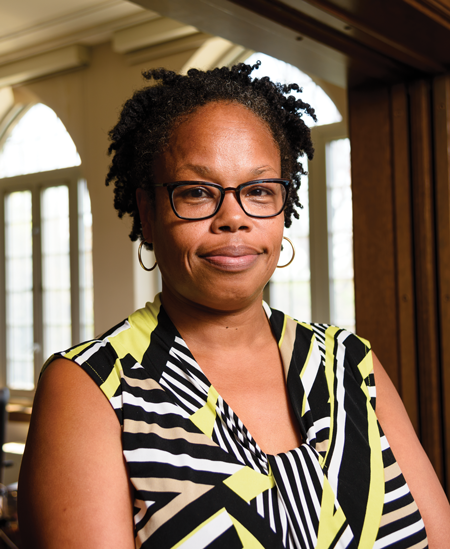
“The 13th takes property and makes them persons. The 14th is supposed to take those persons and make them into citizens.” — Lisa Crooms-Robinson
Photograph by David Hills Photography.
“When you learn that, when something was adopted, the people who drafted it thought it was going to produce a particular result, that’s just evidence,” says Harrison. “They might have made a mistake, might have been assuming something; some things that were true at the time might not be anymore.”
Rhode argues the framers intended for the 14th Amendment to be adapted to changing times and needs, such as in Brown v. Board of Education. “Most of the framers did not contemplate it would end segregation, but I think there’s no question that the vast majority of the public, as well as experts in the field, view it as being on the right side of history and that it was an important moment for the Supreme Court to step in with unanimity and forge a path toward greater racial equality,” says Rhode. “The courts can never do it by themselves. They can only serve as a catalyst for change.”
In recent years, the 14th Amendment has been used to invalidate same-sex marriage bans, anti-gay statutes and gender-discrimination policies. It has been used to enforce congressional statutes and strike down caps on damages. It has been used to apply the Second Amendment to the states, and it has even been used to elect a president. It has been the subject of countless scholarly articles, and its various components continue to be debated today.
“The 14th Amendment really is like a mini-Constitution,” says Witt from Yale. “It touches on so many different issues: the Bill of Rights, equal protection, due process, enforcement, citizenship, etc. It’s like an entire constitution wrapped up into one.”
FUTURE issues
And there still seems to be some unsown ground when it comes to the 14th. During Donald Trump’s presidential candidacy, he challenged birthright citizenship—disputing the idea that natural-born children of undocumented immigrants were U.S. citizens under the 14th Amendment.
“The question of what comes purely from the grant of citizenship in the very first sentence of the 14th Amendment is an issue the courts in the 20th and 21st centuries haven’t really gotten into,” Harrison says. “Is citizenship thick or thin? Does a lot come with it? Or does it just really mean ‘you’re part of a political community and entitled to live here,’ but that’s it?”
Rhode is looking at the opposite end of the life spectrum. “The right to die and to assisted suicide are issues that are going to become increasingly important, given the demographics of the aging baby boomer population,” says Rhode. “I don’t think we have really come to terms with how to deal with end-of-life issues.”
Meanwhile, Crooms-Robinson still sees the original vision of the 14th Amendment as unfulfilled.
“I take the view that the 13th and 14th amendments are linked,” Crooms-Robinson says. “The 13th takes property and makes them persons. The 14th is supposed to take those persons and make them into citizens.
“However, that last transition is still happening and has not been fully realized. The question is: Will we get there?”

